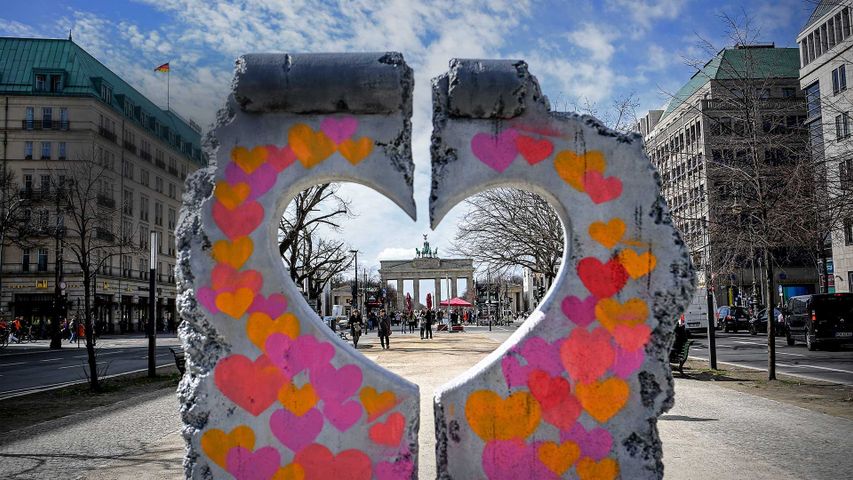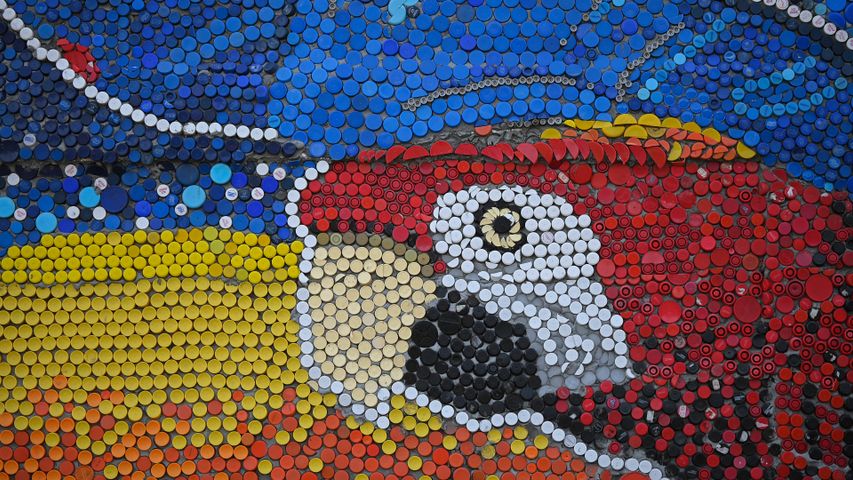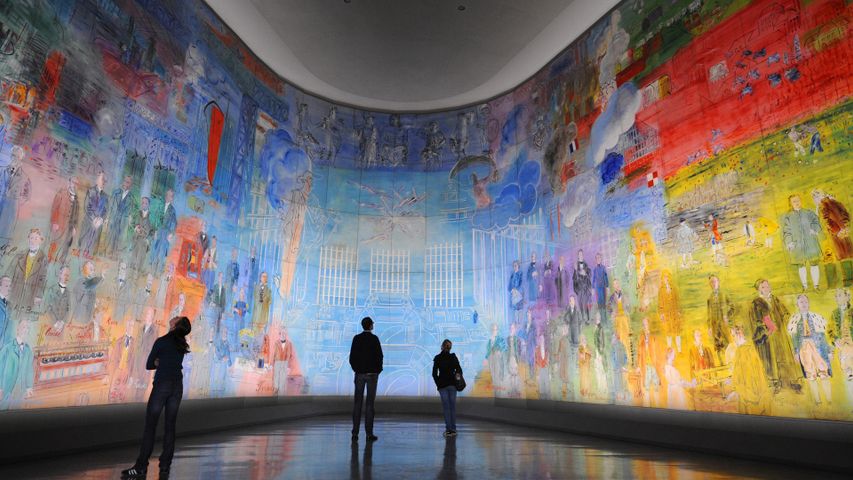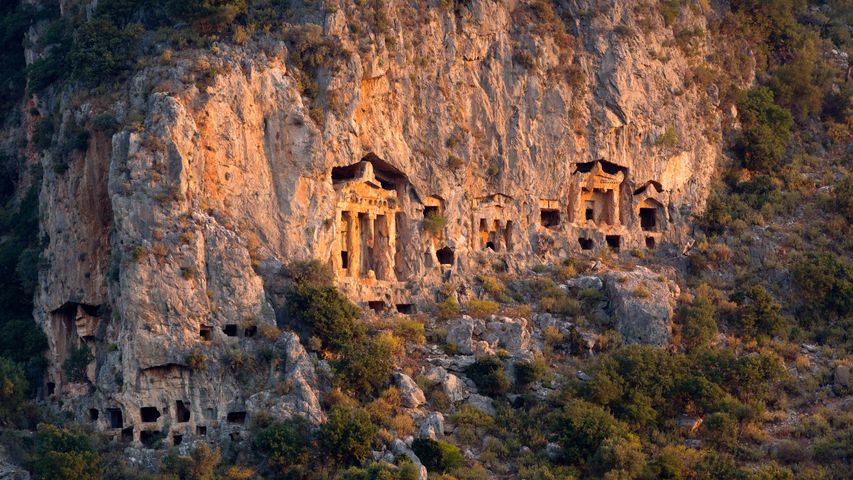The Brandenburg Gate seen through a heart-shaped replica of the Berlin Wall, Berlin, Germany
© Britta Pedersen/picture alliance via Getty Image
We heart Berlin. We heart Berlin
We're looking at one of Germany’s best-known landmarks, the Brandenburg Gate, through a heart-shaped replica of a piece of the Berlin Wall. Today marks the 30th anniversary of the fall of the concrete wall, once a symbol of the ideological divisions of the Cold War. Its demise began on 9 November 1989, when an East German official mistakenly announced a new relaxed travel policy during a televised press conference. Within hours, thousands of hopeful East Berliners rushed to the wall, overwhelming border guards who reluctantly opened the checkpoints. Soon Berliners from the East and West were on the wall, dancing and breaking off pieces with their hands, hammers, and anything else they could find. Shortly afterwards, the wall came down and borders were opened.
The seeds of the wall’s construction were sown in the years following World War II, when Berlin was split into Soviet-controlled East Berlin and the American, British and French sectors known as West Berlin. Although East Berliners weren't officially allowed to emigrate, by 1961 millions had left for life in the West, nearly bringing the East German economy to ruin. On 13 August 1961 Berliners woke up to a barbed-wire fence cutting off West Berlin from East Germany, including East Berlin. Within days, East Germany fortified the barbed wire with concrete, eventually reinforcing it with an outer and inner wall, watch towers and floodlights, while also extending it 28 miles across the city and beyond. For nearly three decades, the wall separated families and communities. Although it came down in 1989, it would be another year before both cities would eventually be reunified under the new Federal Republic of Germany.
Related Images
Bing Today Images




 Bottle cap mural by Oscar Olivares in Guatire, Venezuela
Bottle cap mural by Oscar Olivares in Guatire, Venezuela
 Mona Vale rockpool, Sydney, Australia
Mona Vale rockpool, Sydney, Australia
 'The Spirit of Electricity' by Raoul Dufy, Museum of Modern Art, Paris, France
'The Spirit of Electricity' by Raoul Dufy, Museum of Modern Art, Paris, France
 A delta in the Venetian Lagoon, Italy
A delta in the Venetian Lagoon, Italy
 Grand Prismatic Spring, Yellowstone National Park, Wyoming, United States
Grand Prismatic Spring, Yellowstone National Park, Wyoming, United States
 Desert bighorn sheep in Valley of Fire State Park, Nevada, United States
Desert bighorn sheep in Valley of Fire State Park, Nevada, United States
 Eucalyptus trees, Megalong Valley, Blue Mountains National Park, NSW, Australia
Eucalyptus trees, Megalong Valley, Blue Mountains National Park, NSW, Australia
 Sandstone hoodoos, Bryce Canyon National Park, Utah, United States
Sandstone hoodoos, Bryce Canyon National Park, Utah, United States

